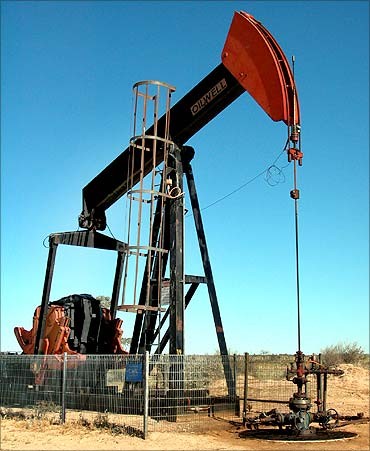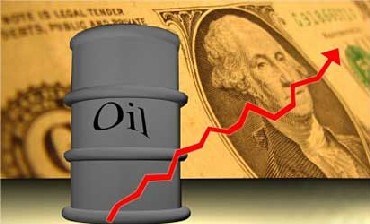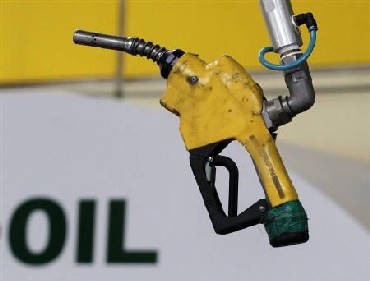 | « Back to article | Print this article |
Is it time to privatise oil trade in India?
On July 16, the world became privy to one of the widely suspected secrets of the oil trade. The immense profits from trading operations in the volatile oil futures market became public.
An email of energy giant Chevron leaked to Bloomberg, Wall Street Journal and other global news agencies revealed that the company made far greater profits from trading than from drilling.
According to the email the profit from trading crude oil and LPG amounted to nearly $100 million with "global sour," the high-sulfur grades, accounting for over $30 million, "sweet crude" profits registering $35 million and LPG contributing to the rest.
The profits from diesel and distillates accounted for $70 million and the total trading profits including that of European operations were a mind-boggling $263.9 million.
Click NEXT to read more...
Is it time to privatise oil trade in India?
Ever since the London Commodity Exchange started in 2000, trading in crude oil has become more profitable than drilling.
Oil prices, which had been stable for decades below the $30 per barrel benchmark, spurted because of high-speed trading in oil futures contracts at the London International Currency Exchange and New York Mercantile Exchange.
Each barrel of oil was sold or bought between 20 and 30 times among the trade cartel members in a round-trip trading operation to raise the price of crude to the levels that are officially quoted or known as Brent Sweet or WTI prices.
The published prices that flirt today with the $100 a barrel benchmark are the selling prices for the big oil traders, not their buying prices.
Click NEXT to read more...
Is it time to privatise oil trade in India?
Insiders report that buying prices of oil are usually much lower, yielding immense trading profits especially when oil is volatile.
The futures trade is dominated by the Swiss-based commodity giants Vitol, Trafigura, Glencore, and the trading arms of BP, Shell, Total, Chevron, besides Wall Street Banks like Morgan Stanley and Goldman Sachs.
According to CBS News Online these traders at the "London loophole" and Wall Street make more money in oil futures than the oil sheikhs in Saudi Arabia earn from drilling oil.
In August, Indian Oil Corporation (IOC), India's biggest oil marketing company (OMC), sought monthly cash support from the government, fearing estimated losses of Rs 27 billion for selling petrol that will not be subsidised by the government and an overall loss exceeding Rs 93 billion.
Click NEXT to read more...
Is it time to privatise oil trade in India?
Why did IOC lose money selling petrol while Chevron made super-profits considering that the Indian consumer buys petrol at a much higher price from IOC than the American buyer does from Chevron?
One of the reasons is that Indian OMCs have not entered the oil trade like American or Chinese companies and buy crude consistently at a higher rate because they lack the cash reserves and the skill set, knowledge and penetration to drive into the oil trade.
Taking action belatedly, the government is now proposing a $10-billion sovereign fund managed by the Reserve Bank of India (RBI) for oil assets.
This will solve only half the problem since we still need to have market-savvy players in the crafty and volatile oil trade.
Click NEXT to read more...
Is it time to privatise oil trade in India?
Preparing a war chest for asset acquisition is only part of the story - the Indian war chest would be tiny, in the range of $10 billion, given the near 2.7 per cent current account deficit.
The Chinese sovereign funds by comparison are massive; the biggest being the $347-billion Safe Investment Corporation and $313-billion asset base of China Investment Corporation.
The Chinese wealth funds have made aggressive forays into uncharted territory in Siberia, Africa and South America for oil and metals. Many of these have failed to show progress or give returns for over a decade.
This does not worry China unduly since it has a huge current account surplus and reserves of over $3 trillion from its export-driven economy.
Click NEXT to read more...
Is it time to privatise oil trade in India?
Considering the volatile geo-political situation, a small sovereign fund with long-term yield may not give an adequate return on investment to grow the India fund. The investment should instead focus on storing, refining and blending, so that it offers a ringside seat in the profitable trading circuit of global oil trade.
Essar Energy has already entered the Brent oil supply chain, buying Shell's Stanlow refinery in UK with its humongous oil storage capacity, and so has Reliance. They could re-enter the Indian supply chain, if subsidies go.
India needs to invest in tank farms and build its storage reserves of oil, in the public and the private sect#8744 so that it can buy and store oil at crests and step off at peaks, thus lowering the average procurement price of oil.
Click NEXT to read more...
Is it time to privatise oil trade in India?
The US has 60 days of such storage reserves at Cushing by which they control buying in volatile markets. This has substantially reduced the price of superior Texas Oil for the US consumer compared to Brent crude.
India, too, needs to free its oil distribution from government buying and subsidies, just like it did to the vegetable oil trade a few years ago.
It needs to let the private and public sector create profitable short-term oil reserves with the RBI sovereign fund as investor.
Such a public-private partnership model will help lower oil prices and, thus, relieve the government of the burden of oil subsidies of around Rs 20,000 crore as well as reduce its trading risks in volatile markets.







